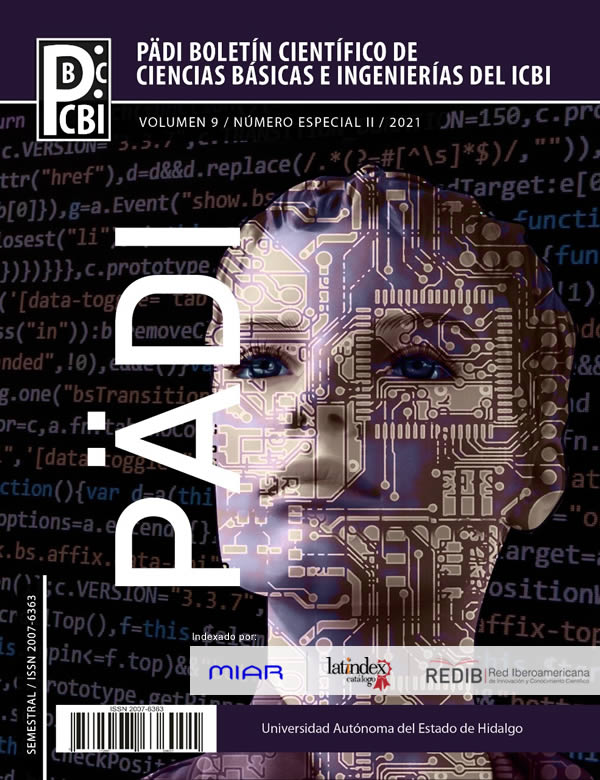Application of the SEM-EDS on the morphological and chemico-elemental studies of the synthesized hydroxyapate with PVP
Abstract
This work presents the results obtained on the morphological and chemical-elemental studies, using SEM-EDS, of the hydroxyapatite synthesized by the microwave assisted hydrothermal method, in which, several concentrations of Polyvinylpyrrolidone (PVP) was used as controller of the size and shape of the Hap particles. According to the SEM results, the PVP promotes the growth of the nanorods structures, where the length was growing when the concentration added of PVP was increasing. The EDS analysis shows that oxygen, calcium and phosphorous were the main elements present in the different Hap samples; it was also observed that Hap sample synthesized in presence of 0.3 wt% of PVP, the rate of Ca/P was 1.69, which is near to the stoichiometric. Finally, these results showed that SEM-EDS is a valuable tool to the study of hydroxyapatite, for this reason a brief introduction of the basic principles of the SEM-EDS operation was also included.
Downloads
References
Cerón, L.S.V.; Lugo, V.R.; Alatorre, J.A.A.; Fernández-Garcia, M.E.; Reyes-Valderrama, M.I.; González-Martínez, P.; Anaya, D.M (2019). Characterization of hap nanostructures doped with AgNp and the gamma radiation effects. Results Phys., 15, 102702.
Gła, M., Sonia Kudłacik-Kramarczyk, Anna Drabczyk, Janusz Walter, Aleksandra Kordyka, Marcin Godzierz, Rafał
Bogucki, Bo˙zena Tyliszczak and Agnieszka Sobczak-Kupiec (2021). Hydroxyapatite Obtained via the Wet Precipitation Method and PVP/PVA Matrix as Components of Polymer-Ceramic Composites for Biomedical Applications. Molecules 26, 4268. https://doi.org/10.3390/molecules26144268
Ipohorski, Miguel y Patricia B. Bozzano (2013). Microscopia Electrónica de Barrido en la Caracterización de Materiales. Ciencia e Investigación - Tomo 63 Nº 3.
Kallum M. Koczkur, Stefanos Mourdikoudis, Lakshminarayana Polavarapu and Sara E. Skrabalak (2015). Polyvinylpyrrolidone (PVP) in nanoparticle synthesis. Dalton Trans., 44, 17883–17905.
Ledea Lozano Oscar E., Haney Castro Fernández, Ramón González Santos, Marcos Farina de Souza, André Linhares Rossi, y Mair de Oliveira (2010). Aplicación de la Microscopia Electrónica de Barrido en la Caracterización de la Poliapatita®. Revista CENIC. Ciencias Químicas, vol. 41, pp. 1-6.
Li. J., Koji Inukai, Yosuke Takahashi, Woosuck Shin (2016). Synthesis and size control of monodispersed BaTiO3–PVP nanoparticles. Journal of Asian Ceramic Societies 4, 394–402
López-Ortiz, S.; Mendoza-Anaya, D.; Sánchez-Campos, D.; Fernandez-García, M.E.; Salinas-Rodríguez, E.; Reyes-
Valderrama, M.I.; Rodríguez-Lugo, V. (2020). The pH Effect on the Growth of Hexagonal and Monoclinic Hydroxyapatite Synthesized by the Hydrothermal Method. J. Nanomater.
Mohammed A., Avin Abdullah (2018). Scanning Electron Microscopy (SEM): A Review. Proceedings of 2018 International Conference on Hydraulics and Pneumatics - HERVEX November 7-9, Băile Govora, Romania.
Montes de Oca Valdés, P., Claudia E. Gutiérrez Wing, Pedro R. González Martínez, Federico García Sántibañez-Sánchez, Gerardo Villa-Sánchez, Demetrio Mendoza-Anaya (2019). Las escamas de pescado como materia prima para el desarrollo de sensores de radiación. Publicación Semestral Pädi Vol. 7 No. Especial 2, 104-108
Nathanael, A.J., Young Ho Seo, and Tae Hwan Oh (2015). PVP Assisted Synthesis of Hydroxyapatite Nanorods with Tunable Aspect Ratio and Bioactivity. Journal of Nanomaterials, Vol. 2015, Article ID 621785, 9 pages, http://dx.doi.org/10.1155/2015/621785
Sánchez-Campos, D.; Mendoza-Anaya, D.; Reyes-Valderrama, M.I.; Esteban-Gómez, S.; Rodríguez-Lugo, V. (2020). Cationic surfactant at high pH in microwave HAp synthesis. Mater. Lett., 265, 3–6.
Sánchez-Campos, Daniel, Maria Isabel Reyes Valderrama, Susana López-Ortíz, Daniela Salado-Leza, María Eufemia Fernández-García, Demetrio Mendoza-Anaya, Eleazar Salinas-Rodríguez and Ventura Rodríguez-Lugo (2021). Modulated Monoclinic Hydroxyapatite: The Effect of pH in the Microwave Assisted Method. Minerals, 11, 314. https://doi.org/10.3390/min11030314
Ramesh S., C. Y. Tan, M. Hamdi, I. Sopyan, W. D. Teng (2007). The influence of Ca/P ratio on the properties of hydroxyapatite bioceramics. Proc. of SPIE Vol. 6423, 64233A. doi: 10.1117/12.779890.
Rodríguez-Lugo, V.; Karthik, T.V.K.; Mendoza-Anaya, D.; Rubio-Rosas, E.; Cerón, L.S.V.; Reyes-Valderrama, M.I.; Salinas-Rodríguez, E. (2018). Wet chemical synthesis of nanocrystalline hydroxyapatite flakes: Effect of pH and sintering temperature on structural and morphological properties. R. Soc. Open Sci. 5.
Rodríguez-Lugo, V, D. Salado-Leza, S. López-Ortiz, D. Mendoza-Anaya, L. S. Villaseñor-Cerón, M. I. Reyes-Valderrama (2020). Revisión de la Hidroxiapatita Nanoestructurada como Alternativa para Tratamiento de Cáncer. Publicación Semestral Pädi Vol. 8 No. Especial 115-127.
Vernon-Parry K D. (2000). Scanning Electron Microscopy: an introduction. Ill-Vs Review, Vol.13 No.4.
Villaseñór Cerón, L.S., D. Mendoza-Anaya, M.I. Reyes-Valderrama, E. Salinas-Rodríguez, V. Rodríguez-Lugo (2019). Estudio termodinámico en la obtención de nanohidroxiapatita por el método de microondas. Publicación Semestral Pädi No. 13, 35-40.
Wang, P.; Li, C.; Gong, H.; Jiang, X.; Wang, H.; Li, K (2010). Effects of synthesis conditions on the morphology of hydroxyapatite nanoparticles produced by wet chemical process. Powder Technol., 203, 315–321.
Zhang, X.; Vecchio, K.S. (2007). Hydrothermal synthesis of hydroxyapatite rods. J. Cryst. Growth, 308, 133–140.












